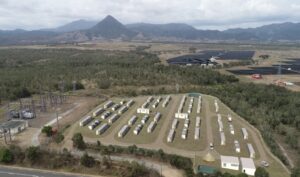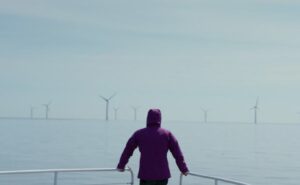West Australian mining giant Fortescue Metals is to add another 150MW of solar PV, and another big battery, as part of a $1 billion program to help power its massive iron ore operations in the Pilbara region with renewable energy.
The solar and battery plans, which will be combined with a new 275km power line and the expansion of a 150MW gas generator, amount to new spending of $666 million and will bring all its mining operations under the one transmission network.
It will add to the previously announced 60MW solar plant and new power line for its existing Pilbara mines and the 30MW/11MWh battery already in operation next to the Newman gas fired generator that is also servicing the iron ore mines of Gina Rinehart.
The commitment by Fortescue is the biggest commitment yet by a mining group in Australia to renewables, and follows the decision last year by Fortescue chair and founder Andrew (Twiggy) Forrest to invest “tens of millions” alongside software billionaire Mike Cannon-Brookes in what could be the world’s biggest solar and battery project in the Northern Territory.
Fortescue chief executive Elizabeth Gaines says the integration of renewables will lower electricity costs, and emissions, and the creation of a bigger network will pave the way for the use of more renewables in the future.
Mining projects in the Pilbara and elsewhere are now looking at sourcing more than 50 per cent of their power needs from wind and solar, because of the significant cost savings, while some – including Fortescue – are looking at even higher ratios.
With the addition of hydrogen electrolysers, 100 per cent renewables is considered possible. Fortescue is already working with the CSIRO and others on the development of hydrogen technology.

The 60MW solar plant to be built near the Chichester mine by Alinta will allow for all of the daytime electricity needs to be met by solar.
Fortescue will own and operate the newly announced projects, including the new solar plants (there appears to be at least two more solar facilities according to the map above, including at the new Iron Bridge mine), the new big battery, and the new transmission line. The existing Solomon diesel plant has been converted to gas.
There is no indication yet exactly how big the battery will be, or where exactly it will be located on the new transmission lines (in yellow on the map above). Gaines told an analysts call that the final dimensions had not been decided and may not be until a tender is prepared.
“Mining is a 24/7 operation and efficient, reliable, competitive energy generation remains an important consideration for the mining sector in Western Australia,” Gaines said in an earlier statement.
“The lack of an integrated transmission network in the Pilbara has been a key barrier to entry for large-scale renewables and Fortescue’s investment will address this issue.
“By installing 150MW of solar PV as part of the Pilbara Generation Project, the modelling indicates we will avoid up to 285,000 tonnes of CO2e per year in emissions, as compared to generating electricity solely from gas.
“Importantly, Pilbara Energy Connect allows for large-scale renewable generation such as solar or wind to be connected at any point on the integrated network, positioning Fortescue to readily increase our use of renewable energy in the future.”
The combination of solar and battery can be expected to deliver considerable savings. Solar will be able to provide bulk energy during the day, while the battery will be able to store some excess, but importantly also act as a balancing facility to improve reliability from the gas generator.
Alinta has been glowing in its praise for the Newman battery, which it says will deliver a sub five-year payback from the unsubsidised investors because it means that the Newman gas plant does not need to constantly run all its generators – some as back-up in the case of an outage.
That has delivered significant savings in fuel costs, and also improved reliability. The battery can run long enough for back-up generators to be switching on if some of the operating gas units have failed.
“The whole role (of the battery) is to elimate spinning reserve, so we are not burning gas in standby mode,” Alinta CEO Jeff Dimery said in an interview with RenewEconomy last year on the Energy Insiders podcast. “The reliability of supply has increased dramatically on the back of that investment.
“It’s much more than the financial return. It’s been very important for our customers for the security and reliability of supply.”
This week, AGL and Vena Energy announced an unsubsidised 100MW/150MWh big battery at Wandoan in Queensland. Vena will build and own the battery, while AGL has entered a contract to operate the facility for 15 years.








